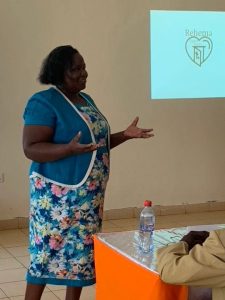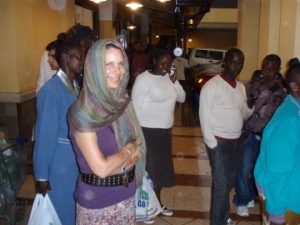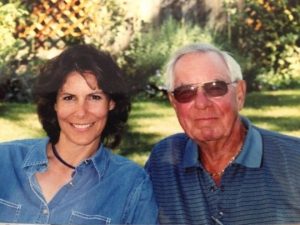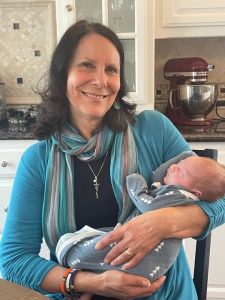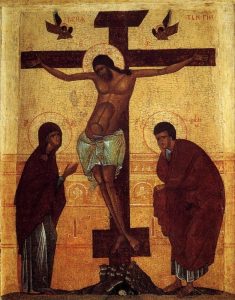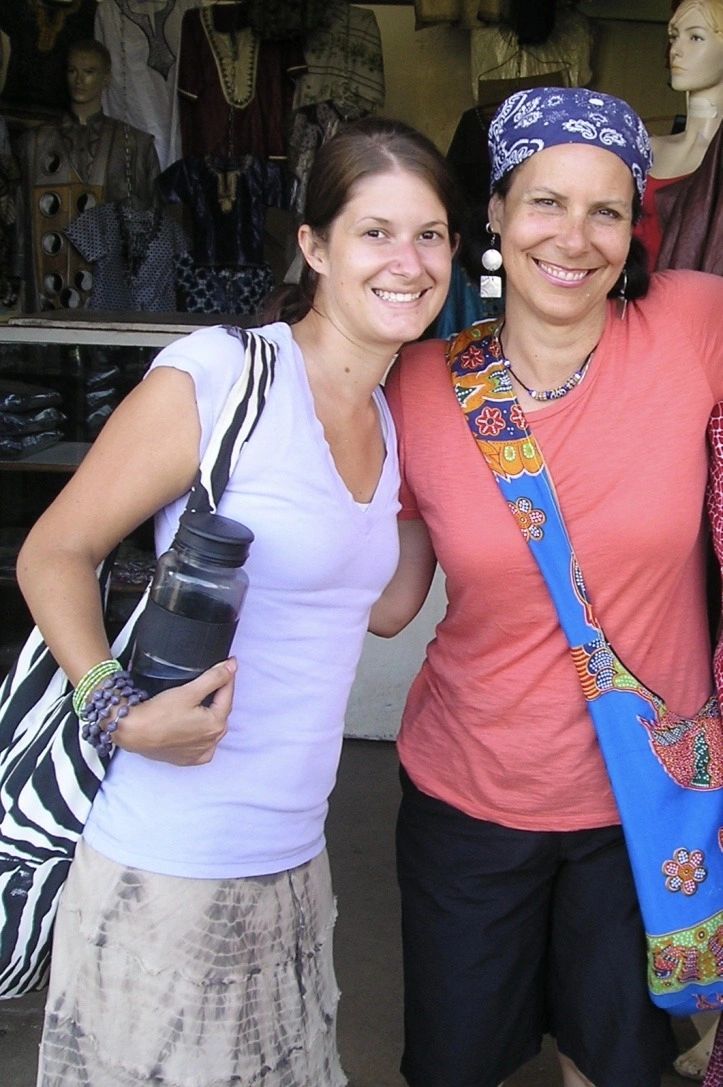
It was an unlikely meeting one April morning, 2012. She, not even thirty. Me, nudging into middle age (OK, I was plunging into middle age, not liking it one bit). Mutual friends kept insisting that we meet because of our travels and work in developing countries. And so one sunny morning we met for tea. She brought with her a simple water filtration system. I brought with me a hefty dose of skepticism. Over the years, I’d seen many a project, brought by many a well-meaning folk to various countries, and in the end, some part of the project quit working leaving those it was meant to serve, no better off. And, so I was prepared not to be impressed.
As we sipped our tea, we got right to it, small talk thankfully eluded. Carrie Beth filled the plastic bucket with water, added dirt to make the water a nice cocoa color, and then ran it through the Sawyer water filter. Well, my skepticism faded along with the brown colored water as it became completely clear once it was filtered. Soon, we were laughing about our initial hesitancy about meeting, and a lasting friendship developed. A few months later, Carrie met me in Kenya and we began working together to provide clean water to those in need.
For those of you who don’t know, Carrie Beth Bowin is founder of the For One Another Foundation. You can read her remarkable story here: foroneanother.org.
During my latest trip to Kenya this article appeared in a national Kenyan newspaper:
30 million Kenyans cannot access clean water
More than 30 million Kenyans are not connected to a reliable water supply while eight out of 10 cannot access piped sewage services, a new study has shown.(Water Services Regulatory Board) Almost half of the citizens in rural Kenya do not have access to clean water.
Frankly, I am surprised that half of the citizens of rural Kenya DO have clean water, at least from what I’ve seen. It is no surprise that drinking clean water is essential for good health, and for life. Diseases from drinking dirty water is the number one cause of death in children under age five. Those whose immune systems are compromised by HIV/AIDS, and other diseases are also at high risk of illness and death as a result of drinking dirty water. Water in Kenya, depending on the source, may carry with it bacteria and protozoan causing diseases such as Typhoid, Cholera, Amoebic dysentery, Giardiasis, E-coli, Streptococcus, Salmonella, Cryptosporidium and Cyclospora . And if the names of these diseases don’t frighten you, the symptoms certainly would!
While we can’t solve the problems of another country, we can, one filter at a time, bring clean water to a few people. As of this writing, we’ve brought over 300 filters to folks in Kenya—potentially, that can be clean water for over 3,000 people. Perhaps it won’t make headlines, and may seem like a drop in the bucket (ahem), every filter makes a difference.
This year, a most generous donation from the For One Another Foundation, and Sawyer International, loaded me up with one hundred water filters to pass out during my three week stay in Kenya. And there is always a demand for more…
A widow who cares for her small children or grandchildren, an orphan in an orphanage, an HIV+ family, students at a boarding school or college, missionaries out in the field, deaconesses, pastors and even me when traveling.

Point of Grace Academy A large filter to provide clean water directly for over 500 students. Everyday. Clean water for teachers and staff. Everyday. Clean water to carry home for those who do not board at the school. Clean water to reduce disease and illness, which reduces time off school, and fees for doctor visits and medicines.

Kibera, the largest slum in Kenya, home to over a million people. Note the water tap adjacent to the raw sewage flowing freely between houses.
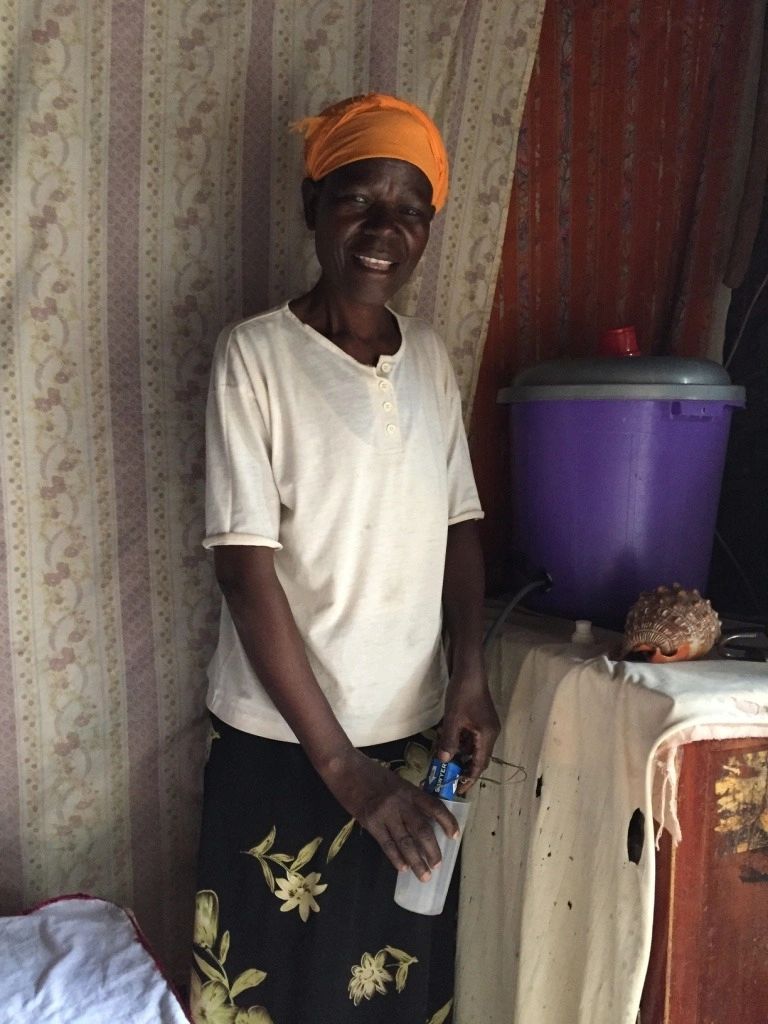
Ann, a widow caring for seven people, including two orphans and two grandchildren, in her teeny tiny home in Kibera. Ann was given a water filter in 2014 and it is still working well. She reports a drastic decrease of abdominal pain, diarrhea and other illnesses in this two- year span.
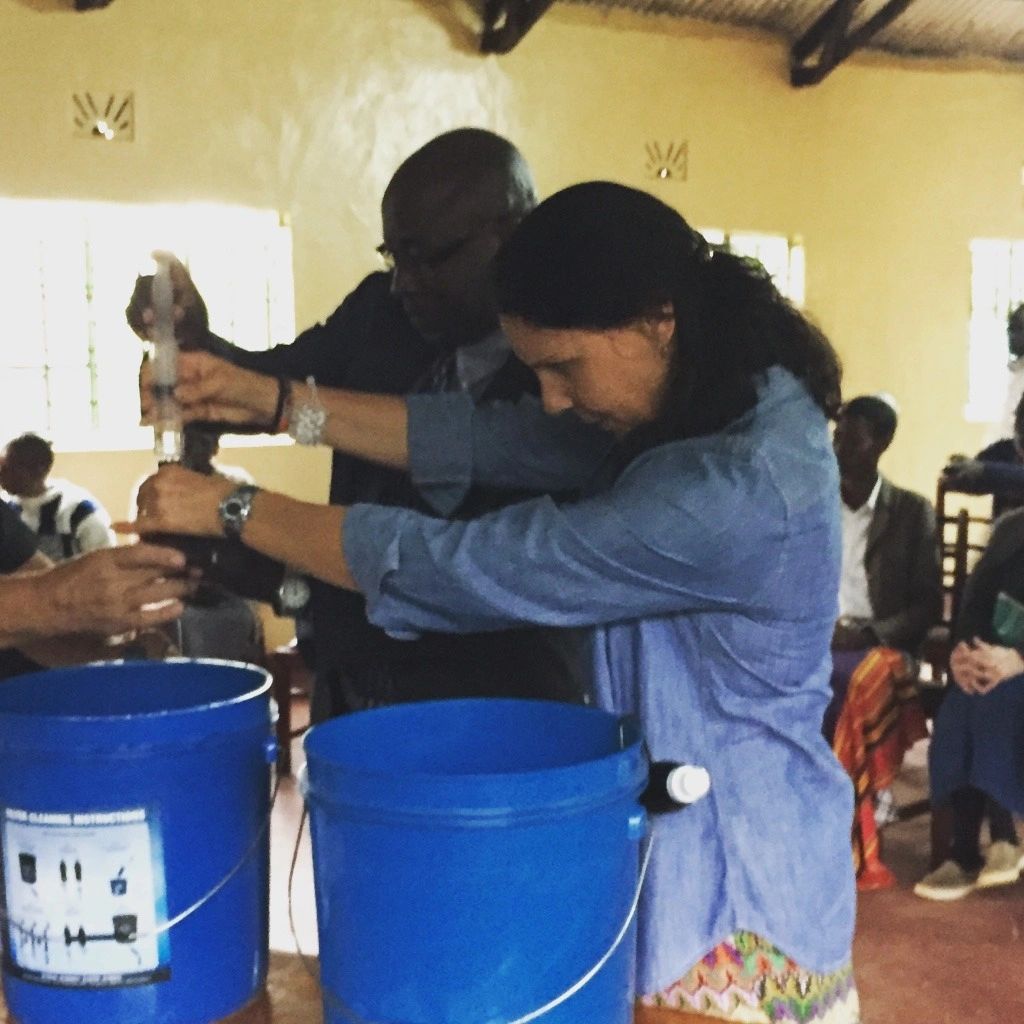
Clean water in Matongo for the Theological Seminary, and the Teachers Training college for students, professors and the kitchen where food is prepared each day.
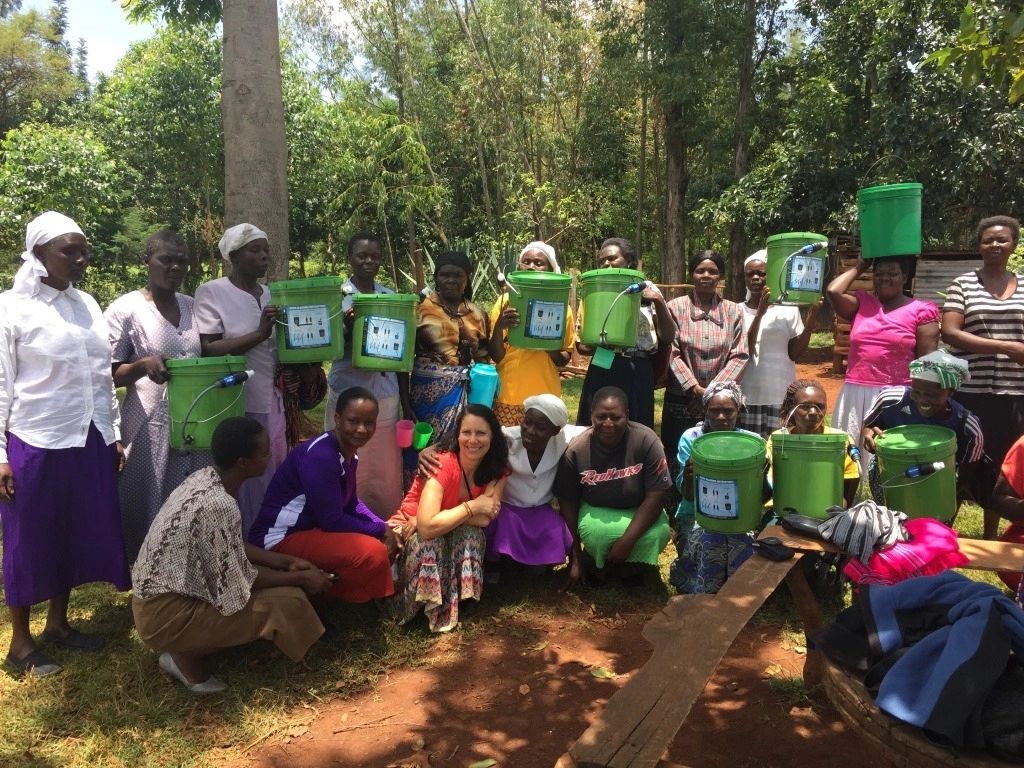
Clean water for women in the rural areas who care for children, grandchildren, orphans and neighbors.
Now, as importantly as distributing filters, is following up on the effectiveness and functionality.
Our trusty point person, Linder, not only helps us teach folks how to use the water filters, she makes home visits to follow up on how the filter is working and record stories on the filter’s effectiveness and/or any problems.
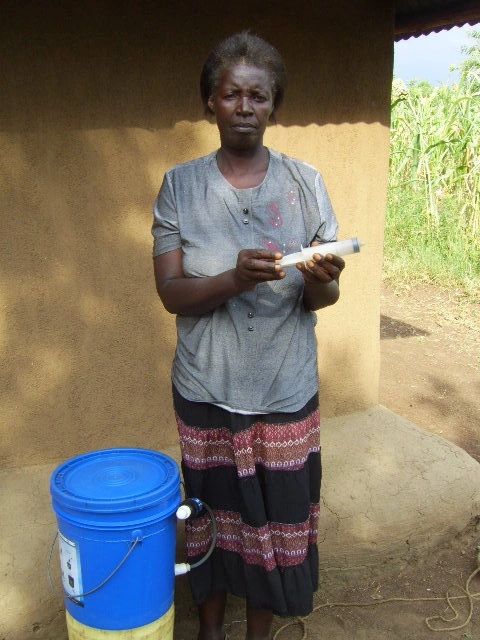
Margaret Atieno has seven people in her household. The water filter has been a great help to her in reducing illnesses and the cost of treatment, and even fuel consumption (she would have to use fuel to boil drinking water prior to using the filter).
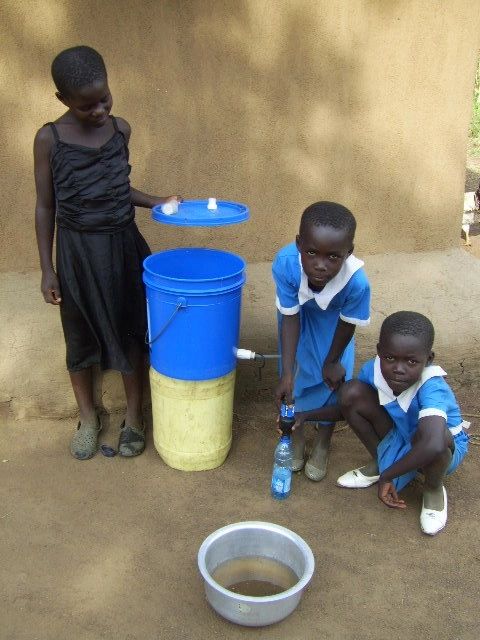
Sheila, Macreen and Mildred (of Margaret Atieno’s household) filtering water.
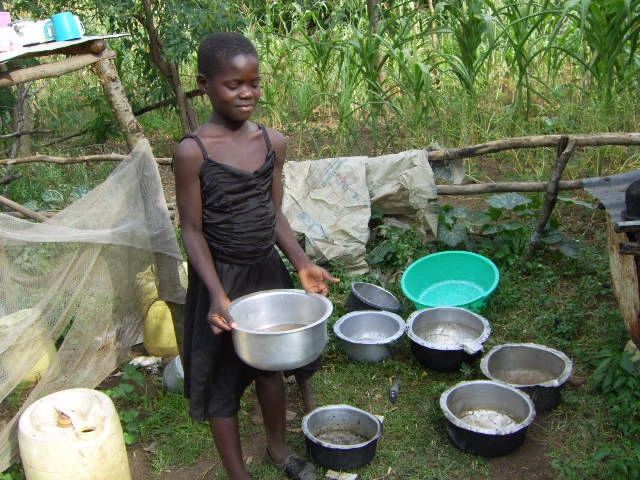
Sheila washing dishes. The final rinse is with filtered water, providing clean dishes and utensils.
Challenge: The syringe used for back-flushing the filter has worn out, and Margaret has to borrow her neighbor’s syringe to clean the filter.
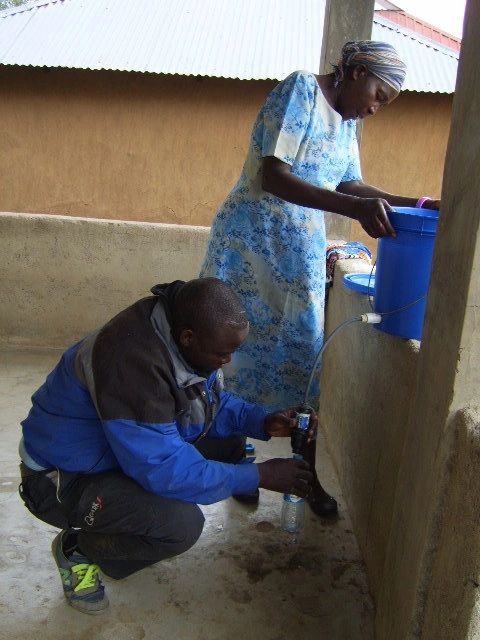
Margaret Juma, widow, caring for her son and five grandchildren in her rural home. Margaret shares the love of Christ outside her door by sharing her clean water with friends and neighbors. Here she is shares clean water to Mr. Okoth, motorcycle driver.
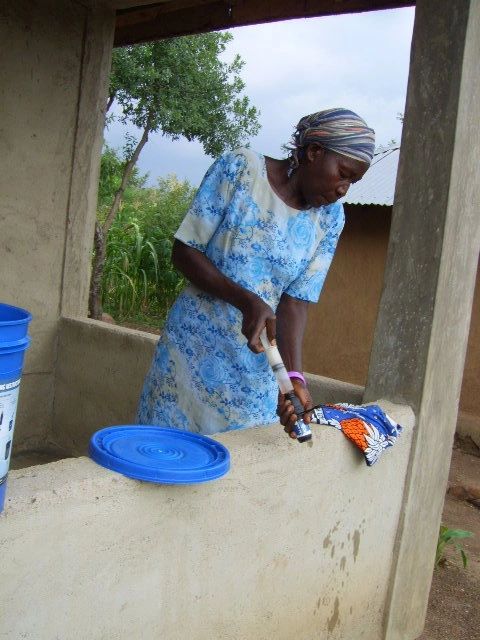
Margaret flushing her filter
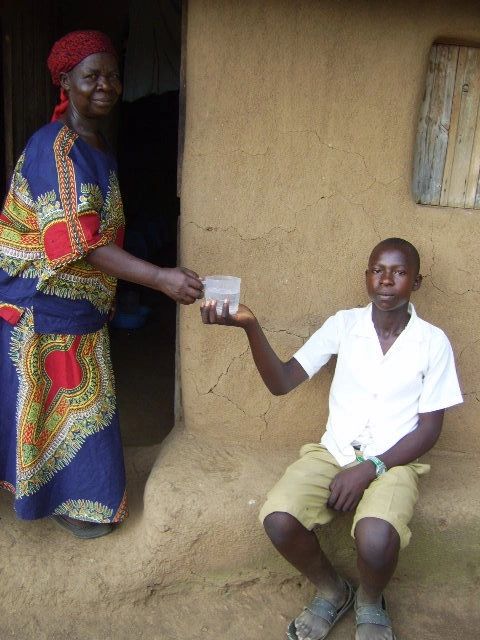
Selina giving water to her son, John, who calls it “mama’s water”. Selina’s source of water is river water and well water which are both unsafe for drinking. Thanks to the use of the filter, she now drinks clean water, thus reducing cost of treatment for water borne diseases, and the cost of fuel to boil water.
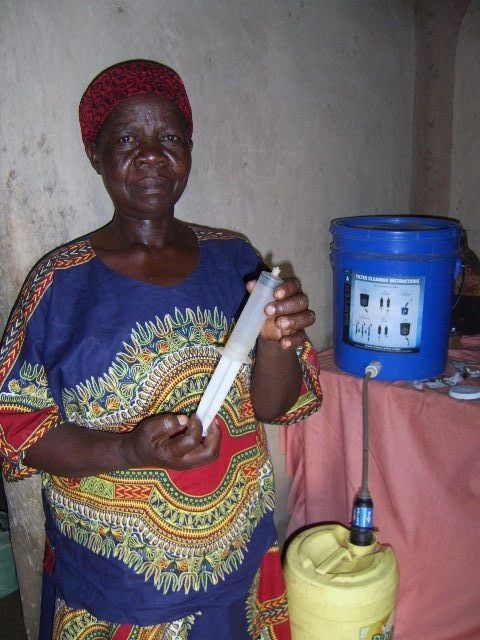
Selina with worn out syringe. She has to walk long distances to borrow another woman’s syringe in order to clean her filter.
Now here’s what impresses me about Sawyer, the company who makes these filters. One of the problems we discovered in the rural areas where the water has a great deal of sediment, is that the filters got clogged more easily, requiring more frequently cleaning. Unfortunately, many of the syringes included in each kit, got worn out and quit working. And if the syringe quits working, then the filter cannot be cleaned, and ceases to work.
With this information, Sawyer sent along new syringes for these folks, which meant that folks were able to clean their filters and get them working again. And, Sawyer is continually updating, tweaking the various parts of the water filter kit. The filter doesn’t change, but many of the supporting parts do. I noticed this time the kits included a blue nut as an alternative means of cleaning the filters. One side fits on the filter. The other side can be screwed into a full water bottle and the filter can be cleaned by squeezing the water bottle and back-flushing this way instead of using the syringe. This may make it easier for some of the older mamas to use.
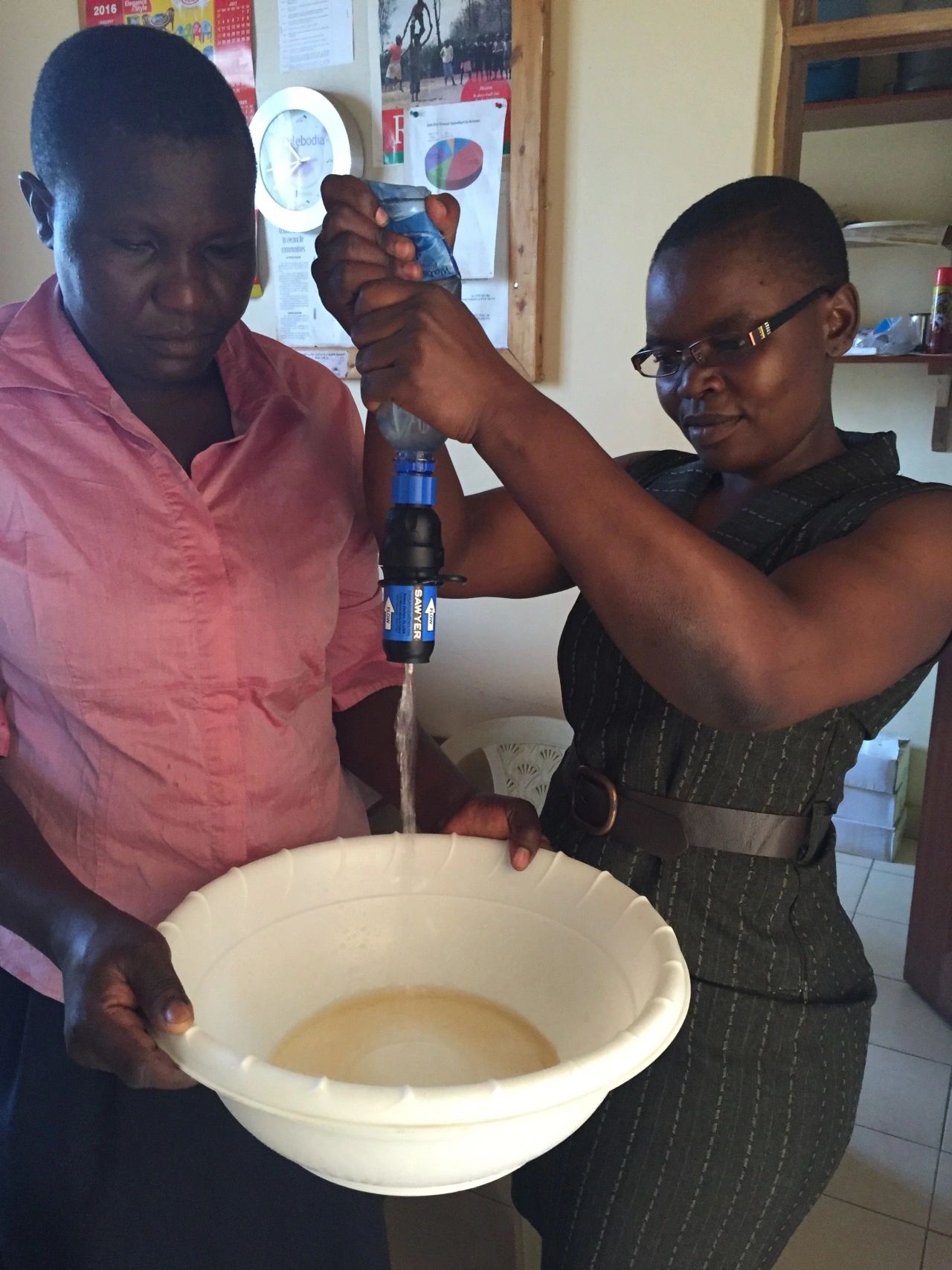
Linder demonstrating the use of the blue fitting and water bottle as an alternative means of cleaning the filter. Vicky assisting.
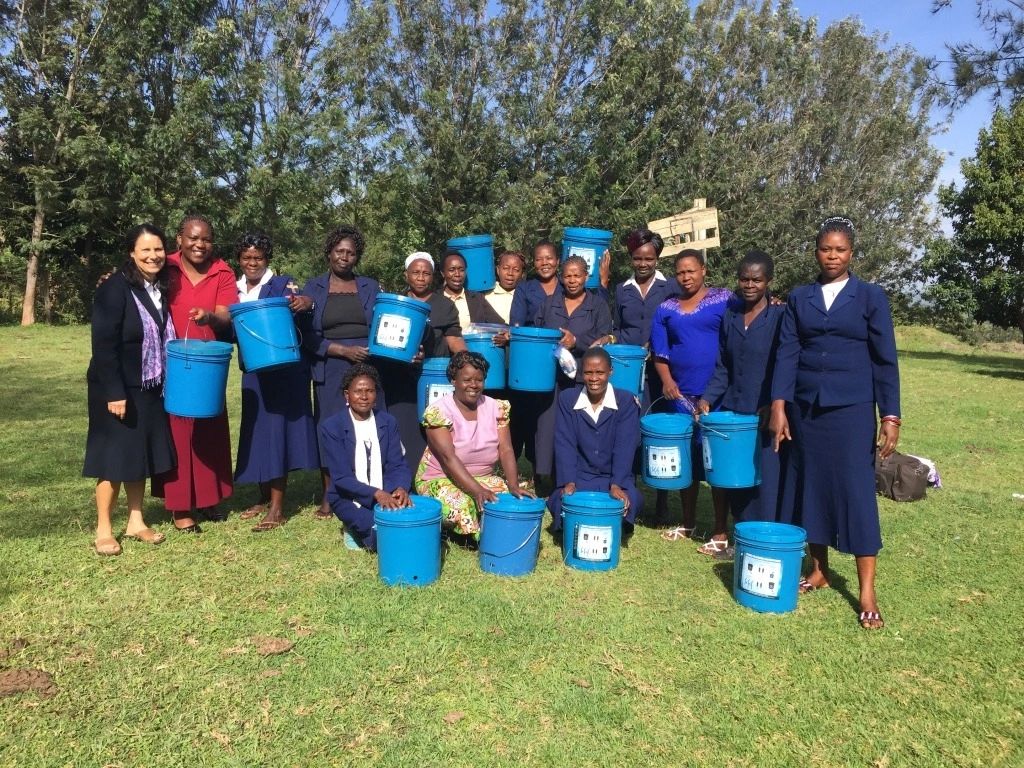
Deaconesses receiving water filters
So, if you would like to contribute to the clean water project in Kenya (or other ongoing projects), send a check to Holy Cross, (earmarked for Kenya) and mail it to:
Holy Cross Lutheran Church
4701 Grove St.
Rocklin, CA 95677
Always Mercy,
Pamela

